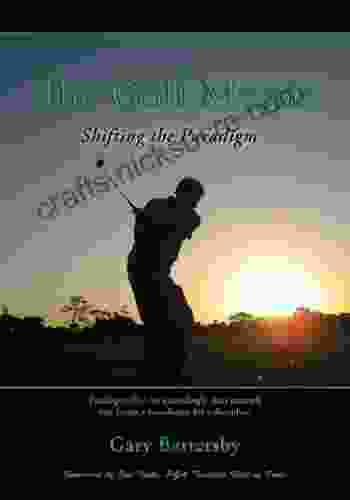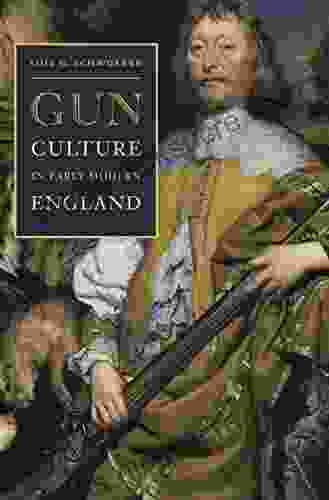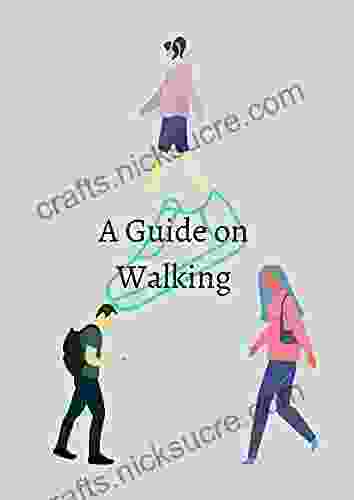Firearms, Power, and Society: Exploring the Dynamics of Gun Culture in Early Modern England

In the annals of human history, the advent of gunpowder and firearms has played a transformative role, forever altering warfare, society, and the balance of power. England, a nation at the forefront of innovation, played a pivotal role in the development and adoption of firearms, ushering in a new era characterized by intricate relationships between weaponry, authority, and cultural norms. This article delves into the fascinating world of gun culture in early modern England, shedding light on its origins, evolution, and profound impact on society.
Origins and Early Development
The of firearms to England can be traced back to the late 14th century, with the first recorded use of hand cannons in naval battles. However, it was not until the 16th century that firearms became widely adopted by the military, transforming traditional warfare and leading to the decline of armored knights and the rise of infantry. The increasing availability of gunpowder and advancements in gun design, such as the invention of the wheellock and matchlock, made firearms more accessible and effective.
5 out of 5
| Language | : | English |
| File size | : | 3770 KB |
| Text-to-Speech | : | Enabled |
| Screen Reader | : | Supported |
| Enhanced typesetting | : | Enabled |
| Word Wise | : | Enabled |
| Print length | : | 272 pages |
Power and Control: Firearms in the Hands of the State
The development of firearms in early modern England was closely intertwined with the evolving concepts of state power and royal authority. The Tudor monarchs, recognizing the potential of firearms to maintain law and order, enforced strict regulations on their ownership and use. Acts such as the Treason Act of 1534 and the Gunpowder Treason Act of 1605 asserted the state's monopoly over firearms, ensuring that only authorized individuals and institutions could possess them. This centralized control served two main purposes: suppressing potential threats to the monarchy and maintaining stability within the realm.
Firearms and the Rise of the Gentry
While the state maintained a monopoly on firearms, the rise of the gentry and the increasing involvement of nobles in military affairs led to the proliferation of guns among the upper classes. Gentlemen eagerly embraced firearms as a symbol of their martial prowess and social status. They formed private armies, known as retinues, and equipped themselves with the latest firearms, enhancing their influence and prestige.
Firearms and the Common People
The availability of firearms extended beyond the ruling elite and the gentry. Skilled craftsmen, artisans, and tradesmen also acquired guns, albeit often less sophisticated models. Firearms served multiple purposes for the common people, including self-defense, hunting for sustenance, and participation in local militias. However, the possession of firearms by the lower classes also raised concerns among the authorities, who feared the potential for social unrest and disorder.
Firearms and the Law: Regulation and Control
The proliferation of firearms in early modern England necessitated the development of a comprehensive legal framework to regulate their ownership, use, and storage. Acts such as the Gunpowder Act of 1621 and the Licensing Act of 1689 introduced strict penalties for illegal possession or misuse of firearms. These regulations aimed to prevent accidents, reduce crime, and maintain public order.
Firearms and the Sporting Culture
Beyond their military and defensive applications, firearms also played a significant role in the development of sporting activities in early modern England. Hunting became increasingly popular among the aristocracy and gentry, with firearms replacing traditional hunting methods. The pursuit of game with guns became a highly codified sport, subject to elaborate rules and etiquette, reflecting the evolving relationship between firearms and leisure activities.
Firearms and Culture: Symbolism and Identity
In addition to their practical uses, firearms also acquired symbolic significance in early modern English culture. Guns became associated with power, authority, and status. They were often displayed in portraits and public ceremonies as representations of wealth and military prowess. The ownership and use of firearms became integral to the formation of gendered identities, with men being predominantly associated with firearms.
Firearms and Social Change: Class Conflict and the Gunpowder Plot
Firearms were not merely passive tools but active agents in shaping social dynamics. In the hands of the common people, they could serve as weapons of resistance against perceived oppression or exploitation. The Gunpowder Plot of 1605, a failed attempt by a group of Catholic conspirators to assassinate King James I, highlighted the potential for firearms to disrupt the established social order and challenge the authority of the state.
The development of gun culture in early modern England was a complex process that intertwined technological innovation, political power, social stratification, and cultural norms. Firearms became symbols of authority, social status, and personal defense, while also serving as catalysts for change and resistance. Through a comprehensive examination of the origins, evolution, and societal impact of gun culture, this article sheds light on the profound role that firearms played in shaping the course of English history and the wider trajectory of human civilization.
Long Descriptive Keywords for Alt Attribute:
* Early modern English soldier holding a musket, symbolizing the prevalence of firearms in military and society * Portrait of Queen Elizabeth I with an ornate pistol, reflecting the importance of firearms in asserting royal authority * Commoner using a firearm for hunting, highlighting the multi-purpose nature of guns in daily life * Rural militia training with firearms, showcasing the role of guns in local defense and social stability * Intricate wheellock pistol from the 16th century, representing the technological advancements that fueled gun culture * Jacobean painting depicting a nobleman with a collection of firearms, underscoring the association between guns and wealth * Gunpowder Plot engraving depicting conspirators preparing a barrel of explosives, highlighting the potential of firearms to disrupt social and political order * Musket used in the English Civil War, symbolizing the transformative role of firearms in warfare and society
5 out of 5
| Language | : | English |
| File size | : | 3770 KB |
| Text-to-Speech | : | Enabled |
| Screen Reader | : | Supported |
| Enhanced typesetting | : | Enabled |
| Word Wise | : | Enabled |
| Print length | : | 272 pages |
Do you want to contribute by writing guest posts on this blog?
Please contact us and send us a resume of previous articles that you have written.
 Fiction
Fiction Non Fiction
Non Fiction Romance
Romance Mystery
Mystery Thriller
Thriller SciFi
SciFi Fantasy
Fantasy Horror
Horror Biography
Biography Selfhelp
Selfhelp Business
Business History
History Classics
Classics Poetry
Poetry Childrens
Childrens Young Adult
Young Adult Educational
Educational Cooking
Cooking Travel
Travel Lifestyle
Lifestyle Spirituality
Spirituality Health
Health Fitness
Fitness Technology
Technology Science
Science Arts
Arts Crafts
Crafts DIY
DIY Gardening
Gardening Petcare
Petcare Collins Kids
Collins Kids Miranda Kenneally
Miranda Kenneally Marlene Wagman Geller
Marlene Wagman Geller Dr Robert Pasahow
Dr Robert Pasahow Achille Rubini
Achille Rubini Leigh Bardugo
Leigh Bardugo Nancy Mohrbacher
Nancy Mohrbacher Iain Highfield
Iain Highfield Gisle Solhaug
Gisle Solhaug Alicia Silverstone
Alicia Silverstone Eduardo Duran
Eduardo Duran Brigitte Jordan
Brigitte Jordan Marvin Valerie Georgia
Marvin Valerie Georgia Ronald Kaine
Ronald Kaine Lois G Schwoerer
Lois G Schwoerer Jacob Neumann
Jacob Neumann Drew Harris
Drew Harris Richelle Mead
Richelle Mead Elena Aguilar
Elena Aguilar Clara Shaper
Clara Shaper Charles Thomas Jr
Charles Thomas Jr Claire Ahn
Claire Ahn Casey Robson
Casey Robson E P Marcellin
E P Marcellin Rosie Pope
Rosie Pope Glen Finland
Glen Finland Mikki Daughtry
Mikki Daughtry Michael L Bloomquist
Michael L Bloomquist Jessica Hepburn
Jessica Hepburn Randall Hyde
Randall Hyde Carley Roney
Carley Roney Rob Gray
Rob Gray Jeff Bauman
Jeff Bauman Jack Cavanaugh
Jack Cavanaugh Pearson Education
Pearson Education Charles H Kraft
Charles H Kraft Horace Kephart
Horace Kephart Kemi Iwalesin
Kemi Iwalesin Richard Lighthouse
Richard Lighthouse Achim K Krull
Achim K Krull O Thomas Gift
O Thomas Gift Sarah K L Wilson
Sarah K L Wilson Tom Rosenbauer
Tom Rosenbauer Aaron Reed
Aaron Reed Michel Roy
Michel Roy Ann Frederick
Ann Frederick Stephanie Zeiss
Stephanie Zeiss Shari Eskenas
Shari Eskenas Matt Warshaw
Matt Warshaw J Robert King
J Robert King Sarah Luddington
Sarah Luddington Jennifer L Hunt
Jennifer L Hunt Adam Lashinsky
Adam Lashinsky Programming Languages Academy
Programming Languages Academy Abbi Glines
Abbi Glines Jenny Han
Jenny Han Hans C Ohanian
Hans C Ohanian Kirk Bailey
Kirk Bailey Rory Miller
Rory Miller Chashiree M
Chashiree M Mark Januszewski
Mark Januszewski Bathroom Readers Institute
Bathroom Readers Institute Irene Lewis Mccormick
Irene Lewis Mccormick Bruce Van Brunt
Bruce Van Brunt Marie Cirano
Marie Cirano Erik Scott De Bie
Erik Scott De Bie Christopher Pike
Christopher Pike Scott Meyers
Scott Meyers Barry Dainton
Barry Dainton Martha Gellhorn
Martha Gellhorn Emma Crewe
Emma Crewe James Heberd
James Heberd Beth Newell
Beth Newell Sorin Dumitrascu
Sorin Dumitrascu Blake D Bauer
Blake D Bauer Tom Mccarthy
Tom Mccarthy Joy Neighbors
Joy Neighbors Arthur Atchabahian
Arthur Atchabahian Stephen Brennan
Stephen Brennan Uri Bram
Uri Bram Kaylynn Flanders
Kaylynn Flanders T L Lowery
T L Lowery Stuart Firestein
Stuart Firestein Michelle Hodkin
Michelle Hodkin Mary Wong
Mary Wong Paul Chiasson
Paul Chiasson Norton Juster
Norton Juster Jasna Tuta
Jasna Tuta Mark Strom
Mark Strom Sam J Miller
Sam J Miller Anthony Wilkenson
Anthony Wilkenson Jim Willis
Jim Willis Rick Sekuloski
Rick Sekuloski Caroline Kaufman
Caroline Kaufman Cassandra Eason
Cassandra Eason Maxine Levaren
Maxine Levaren Abby Mcallister
Abby Mcallister Abby Haight
Abby Haight Jennifer Ackerman
Jennifer Ackerman Larry Carpenter
Larry Carpenter Abu Mussab Wajdi Akkari
Abu Mussab Wajdi Akkari Ken Springer
Ken Springer Adam Freeman
Adam Freeman Randy Walker
Randy Walker Arthur Turrell
Arthur Turrell Teresa Finney
Teresa Finney Felice Fox
Felice Fox Xiuhtezcatl Martinez
Xiuhtezcatl Martinez Al Desetta
Al Desetta Stephen R Lawhead
Stephen R Lawhead Stephen Gray
Stephen Gray Reinette Biggs
Reinette Biggs Dan Morris
Dan Morris Brian Hoggard
Brian Hoggard Walter Browder
Walter Browder Claire Santry
Claire Santry Carl Vernon
Carl Vernon Abinash Das
Abinash Das Sasha Abramsky
Sasha Abramsky Garo Yepremian
Garo Yepremian Winston Chang
Winston Chang Deborah Beck Busis
Deborah Beck Busis Sherri Granato
Sherri Granato Amber Domoradzki
Amber Domoradzki Alan Robertson
Alan Robertson Dan Werb
Dan Werb Liza Angela
Liza Angela R L Stine
R L Stine Lisa Latimer
Lisa Latimer Tomi Adeyemi
Tomi Adeyemi Lindsey Ellison
Lindsey Ellison Andrew Skurka
Andrew Skurka Scott Parsons
Scott Parsons Rachel Caine
Rachel Caine Lucy Letcher
Lucy Letcher Barbara Decker
Barbara Decker Jennifer Shannon
Jennifer Shannon David Winner
David Winner John Hancock
John Hancock Peter Sagal
Peter Sagal Louise Pickford
Louise Pickford Natasha Preston
Natasha Preston Colin Hunter
Colin Hunter Daniel Carter Beard
Daniel Carter Beard Vivian Gussin Paley
Vivian Gussin Paley Laurie Chaikind Mcnulty Lcsw C
Laurie Chaikind Mcnulty Lcsw C Christophe Jaffrelot
Christophe Jaffrelot Goodman Publishing
Goodman Publishing Judi Kesselman Turkel
Judi Kesselman Turkel Andrea M Nelson Royes
Andrea M Nelson Royes Abigail Tucker
Abigail Tucker Aliza Green
Aliza Green Jon Butterworth
Jon Butterworth Sissy Goff
Sissy Goff Sheila Lamb
Sheila Lamb Charles Fernyhough
Charles Fernyhough Ann Mariah Cook
Ann Mariah Cook Gail Buckland
Gail Buckland Michael Egan
Michael Egan George John Romanes
George John Romanes Rania Abouzeid
Rania Abouzeid Chris Worfolk
Chris Worfolk Stefan Ball
Stefan Ball Brandon Neice
Brandon Neice Robert Allans
Robert Allans Tom Migdalski
Tom Migdalski Helen C Rountree
Helen C Rountree Kim Gosselin
Kim Gosselin Eugene H Merrill
Eugene H Merrill Monica Sorrenson
Monica Sorrenson Sean Lewis
Sean Lewis P S Page
P S Page Corinne Andrews
Corinne Andrews Adam Enaz
Adam Enaz Debbie Ford
Debbie Ford Lee Sandlin
Lee Sandlin Lavinia Collins
Lavinia Collins Andy Dumas
Andy Dumas Abigail Hing Wen
Abigail Hing Wen Adam Galinsky
Adam Galinsky Jim Morekis
Jim Morekis Sharon Boyd
Sharon Boyd Peter Harrison
Peter Harrison Ed Engle
Ed Engle Gloria Atanmo
Gloria Atanmo Man Kam Lo
Man Kam Lo Elisabetta Viggiani
Elisabetta Viggiani Christopher Black
Christopher Black Sally Clarkson
Sally Clarkson Daphne Poltz
Daphne Poltz Lucio Russo
Lucio Russo David Warriner
David Warriner Terry Palechuk
Terry Palechuk Cornel West
Cornel West Jay Ruud
Jay Ruud Matt Owens
Matt Owens Lillian Cumic
Lillian Cumic Aaron Hahn
Aaron Hahn Melodie M Davis
Melodie M Davis David Feddes
David Feddes Gerald A Voorhees
Gerald A Voorhees Conrad Bauer
Conrad Bauer Abby Hafer
Abby Hafer Steve Griffith
Steve Griffith William Hamilton Gibson
William Hamilton Gibson T L Christianson
T L Christianson Irakli Makharadze
Irakli Makharadze Richard Langer
Richard Langer Ron Jones
Ron Jones Lynn Alley
Lynn Alley Abdul Foster
Abdul Foster Charlie Barker
Charlie Barker Seth Kugel
Seth Kugel Alifya And Umesh Mohite
Alifya And Umesh Mohite Kayla Cottingham
Kayla Cottingham Adam D Scott
Adam D Scott Megan Lane
Megan Lane Bill Loguidice
Bill Loguidice Alexander Nehamas
Alexander Nehamas Edward J Larson
Edward J Larson Shannon Hale
Shannon Hale Tomos Forrest
Tomos Forrest Lynn Rush
Lynn Rush Katie Lear
Katie Lear Joe Simpson
Joe Simpson Catherine Ryan Hyde
Catherine Ryan Hyde Gregor Clark
Gregor Clark Jimmy Houston
Jimmy Houston Gary Sakuma
Gary Sakuma Katrina Kahler
Katrina Kahler Gavin D J Harper
Gavin D J Harper Kathy Koch Phd
Kathy Koch Phd Jessie Hartland
Jessie Hartland Eze Ugbor
Eze Ugbor Chris Jericho
Chris Jericho Al Barkow
Al Barkow Carolyn Jessop
Carolyn Jessop David G Brown
David G Brown Michael N Mitchell
Michael N Mitchell Debbie Elicksen
Debbie Elicksen Aaron James
Aaron James Ned Johnson
Ned Johnson John Taylor
John Taylor Aaron Graves
Aaron Graves Chiara Giuliani
Chiara Giuliani Nick Holt
Nick Holt Sheldon Axler
Sheldon Axler Zoyla Arana
Zoyla Arana Peter David
Peter David Lynn E Ponton
Lynn E Ponton Maureen Duffin Ward
Maureen Duffin Ward Christopher Monahan
Christopher Monahan Michelle Obama
Michelle Obama Abhishek V R
Abhishek V R Rose Ann Hudson
Rose Ann Hudson Abraham Silberschatz
Abraham Silberschatz Rachael Ray
Rachael Ray Chaz Scoggins
Chaz Scoggins Domenica Marchetti
Domenica Marchetti Craig Timberg
Craig Timberg Brian L Gorman
Brian L Gorman Neil Oliver
Neil Oliver Aaron Mahnke
Aaron Mahnke Douglas W Hubbard
Douglas W Hubbard Abdelkader Nouiri
Abdelkader Nouiri Charles C Patrick
Charles C Patrick Erika Fatland
Erika Fatland Chuck Callaway
Chuck Callaway John Caig
John Caig Taylan Hoca
Taylan Hoca Jeremy Shinewald
Jeremy Shinewald Meg Keys
Meg Keys Amelia Whitmore
Amelia Whitmore Paula Deen
Paula Deen Andrew Campanella
Andrew Campanella Barbara A Lewis
Barbara A Lewis Jeremy Roenick
Jeremy Roenick Steve Roper
Steve Roper Adam J Cox
Adam J Cox Phong Thong Dang
Phong Thong Dang Kristin Berry
Kristin Berry Lin Wellford
Lin Wellford Adam Boduch
Adam Boduch Abbas Kazerooni
Abbas Kazerooni Sean Mcmanus
Sean Mcmanus Vince Kotchian
Vince Kotchian Genius Reads
Genius Reads Ken Retallic
Ken Retallic Alicia C Simpson
Alicia C Simpson Todd Graves
Todd Graves Renda Dionne Madrigal
Renda Dionne Madrigal Tim Jarvis
Tim Jarvis Abigail Hair
Abigail Hair Amby Burfoot
Amby Burfoot Allan Sand
Allan Sand Jennifer Finney Boylan
Jennifer Finney Boylan Richard Martin
Richard Martin Bill Mckibben
Bill Mckibben Tamora Pierce
Tamora Pierce Carmen Moreno
Carmen Moreno Lisa M Schab
Lisa M Schab Christopher Knight
Christopher Knight Brian Greene
Brian Greene Deborah Madison
Deborah Madison Curt Lader
Curt Lader Benjamin Roberts
Benjamin Roberts Maya Lang
Maya Lang Zoe Hamlet Silva
Zoe Hamlet Silva Lisa Robertson
Lisa Robertson Jay Dawes
Jay Dawes Jennifer Greene
Jennifer Greene Al Baird
Al Baird Adam J Rosh
Adam J Rosh Ralph Villiger
Ralph Villiger Aaron J Perry
Aaron J Perry An American Citizen
An American Citizen Amber Fox
Amber Fox Stephen Abbott
Stephen Abbott Lenyfer Garrido
Lenyfer Garrido Adam Braus
Adam Braus Garrett Mcnamara
Garrett Mcnamara Kate Rope
Kate Rope Lisa M Given
Lisa M Given Aaron Reed Msn Crna
Aaron Reed Msn Crna Randi Hutter Epstein
Randi Hutter Epstein Vivienne Sanders
Vivienne Sanders Scott Carney
Scott Carney Papus
Papus William Deresiewicz
William Deresiewicz Winifred Conkling
Winifred Conkling Jack Moore
Jack Moore Barbara Natterson Horowitz
Barbara Natterson Horowitz Brad Brewer
Brad Brewer Agustin Fuentes
Agustin Fuentes Emily Suzanne Clark
Emily Suzanne Clark G Bailey
G Bailey Ilsa J Bick
Ilsa J Bick Abbey Curran
Abbey Curran Thomas Wilson
Thomas Wilson Israel Finkelstein
Israel Finkelstein Adam Becker
Adam Becker Jason Korol
Jason Korol Adam Chandler
Adam Chandler Ian Mcleod
Ian Mcleod David Rensin
David Rensin Shuai Huang
Shuai Huang Aaron Mccargo
Aaron Mccargo Christopher S Stewart
Christopher S Stewart Thubten Yeshe
Thubten Yeshe Vikas Kakwani
Vikas Kakwani Fred Fields
Fred Fields Laura Sebastian
Laura Sebastian Susan Zeppieri
Susan Zeppieri Michael Gruenbaum
Michael Gruenbaum Robert Reid
Robert Reid George J Hademenos
George J Hademenos Sheri Van Dijk
Sheri Van Dijk Paul Mclerran
Paul Mclerran Stacy Eaton
Stacy Eaton Devika Primic
Devika Primic John D Gordon
John D Gordon Lisa Pineda
Lisa Pineda Alvin Alexander
Alvin Alexander Gil Capps
Gil Capps Tony Soper
Tony Soper Moon Ho Jung
Moon Ho Jung Tali Edut
Tali Edut Phil Boyle
Phil Boyle M J Parisian
M J Parisian Barry Robinson
Barry Robinson Pamela Druckerman
Pamela Druckerman Miriam Forman Brunell
Miriam Forman Brunell Roman Dial
Roman Dial Abridged Ed Edition Kindle Edition
Abridged Ed Edition Kindle Edition Aaron Oster
Aaron Oster Andy Couturier
Andy Couturier Steven Alan Childress
Steven Alan Childress Kel Carpenter
Kel Carpenter Rolf Mowatt Larssen
Rolf Mowatt Larssen Robert Fritz
Robert Fritz Paul Schneider
Paul Schneider Justin Driver
Justin Driver Charles L Byrne
Charles L Byrne Adam Frank
Adam Frank Ian Davis
Ian Davis Abigail Melton
Abigail Melton Marc Dando
Marc Dando Susan Walton
Susan Walton Kenn Kaufman
Kenn Kaufman Jeremy Paxman
Jeremy Paxman Pat Chargot
Pat Chargot Virginia Smith Harvey
Virginia Smith Harvey David Lipsky
David Lipsky Christian Beamish
Christian Beamish Steve Mcmenamin
Steve Mcmenamin Michael Johnson
Michael Johnson Louise Thaden
Louise Thaden Cosmas Inyang
Cosmas Inyang Adam Koch
Adam Koch Gayle Forman
Gayle Forman Abigail Owen
Abigail Owen Abigail Alling
Abigail Alling Dawson Church
Dawson Church Kevin A Morrison
Kevin A Morrison Tom Jackson
Tom Jackson Asato Asato
Asato Asato Laurence Steinberg
Laurence Steinberg Heather Lynn
Heather Lynn Steve Rosenberg
Steve Rosenberg Sophie Mccartney
Sophie Mccartney Ben Cohen
Ben Cohen Annie Nicholas
Annie Nicholas Al Yellon
Al Yellon Darrin Bergman
Darrin Bergman Michael Baigent
Michael Baigent Lisa Heffernan
Lisa Heffernan Christina Hoff Sommers
Christina Hoff Sommers Adam Lazarus
Adam Lazarus Michael Crawley
Michael Crawley Suzanne Corkin
Suzanne Corkin Farah Shabazz Ii
Farah Shabazz Ii Harley Rustad
Harley Rustad Achref Hassini
Achref Hassini Emily J Taylor
Emily J Taylor Scott Butler
Scott Butler Laura Gao
Laura Gao Gladys Chepkirui Ngetich
Gladys Chepkirui Ngetich Aiden Thomas
Aiden Thomas Ryan Smithson
Ryan Smithson Jeremy Miles
Jeremy Miles Betsy Miller
Betsy Miller Stephen A Mitchell
Stephen A Mitchell Baba Ifa Karade
Baba Ifa Karade Sam Jarman
Sam Jarman Dan Shideler
Dan Shideler James Surowiecki
James Surowiecki Chella Quint
Chella Quint Gerry Donohue
Gerry Donohue Adam H Balen
Adam H Balen Fumio Sasaki
Fumio Sasaki Linda Sarris
Linda Sarris Martha C Nussbaum
Martha C Nussbaum Adam Benshea
Adam Benshea Axie Oh
Axie Oh Richard Sattora
Richard Sattora Scott Shaw
Scott Shaw Laura Ray
Laura Ray Phil Gaimon
Phil Gaimon Ron Hotchkiss
Ron Hotchkiss Timothy Phelps
Timothy Phelps Laura Peyton Roberts
Laura Peyton Roberts Jane Gross
Jane Gross Carl Jones
Carl Jones Barbara Fox
Barbara Fox Sarah Maslin Nir
Sarah Maslin Nir Mary Roach
Mary Roach Dmv Test Bank
Dmv Test Bank Adam Kimelman
Adam Kimelman Bobby Reyes
Bobby Reyes Ada Calhoun
Ada Calhoun Stephanie Puglisi
Stephanie Puglisi Abby Sunderland
Abby Sunderland Tim Larkin
Tim Larkin Emily K Neuburger
Emily K Neuburger Aaron Blight
Aaron Blight Kit Bauman
Kit Bauman Linford Stutzman
Linford Stutzman Hillary Allen
Hillary Allen Dick Edie
Dick Edie Abigail Pogrebin
Abigail Pogrebin Wayne Westcott
Wayne Westcott John Kean
John Kean Og Mandino
Og Mandino David Simon
David Simon Abigail Marshall
Abigail Marshall Sarah Moore
Sarah Moore Ariana Eagleton
Ariana Eagleton Helen Scales
Helen Scales Achusim Michael
Achusim Michael Aaron Lee Johnson
Aaron Lee Johnson Rex Ogle
Rex Ogle
Light bulbAdvertise smarter! Our strategic ad space ensures maximum exposure. Reserve your spot today!

 Maurice Parker360 Driving Test Questions To Help You Ace Your DMV Exam Practice Driving...
Maurice Parker360 Driving Test Questions To Help You Ace Your DMV Exam Practice Driving... Caleb LongFollow ·10.3k
Caleb LongFollow ·10.3k Camden MitchellFollow ·16.2k
Camden MitchellFollow ·16.2k Miguel NelsonFollow ·10.1k
Miguel NelsonFollow ·10.1k Will WardFollow ·14.8k
Will WardFollow ·14.8k Hassan CoxFollow ·11.1k
Hassan CoxFollow ·11.1k W.B. YeatsFollow ·9.2k
W.B. YeatsFollow ·9.2k Elias MitchellFollow ·8.1k
Elias MitchellFollow ·8.1k George BellFollow ·6.6k
George BellFollow ·6.6k

 Doug Price
Doug PriceTracing the Evolution of Modern Psychoanalytic Thought:...
Psychoanalysis, once considered a radical...

 Devin Ross
Devin RossThe Digital Role Playing Game Approaches To Digital Game...
These are just a few of the many...

 F. Scott Fitzgerald
F. Scott FitzgeraldHistory from Things: Essays on Material Culture
History from Things:...

 Percy Bysshe Shelley
Percy Bysshe ShelleyThe Priest Lake Girl and the Cabin of Love: A True Story...
The Murder On...

 Isaiah Powell
Isaiah PowellThe Golf Mystic: Dick Edie's Unconventional Approach to...
In the annals of golf history, the name Dick...
5 out of 5
| Language | : | English |
| File size | : | 3770 KB |
| Text-to-Speech | : | Enabled |
| Screen Reader | : | Supported |
| Enhanced typesetting | : | Enabled |
| Word Wise | : | Enabled |
| Print length | : | 272 pages |












